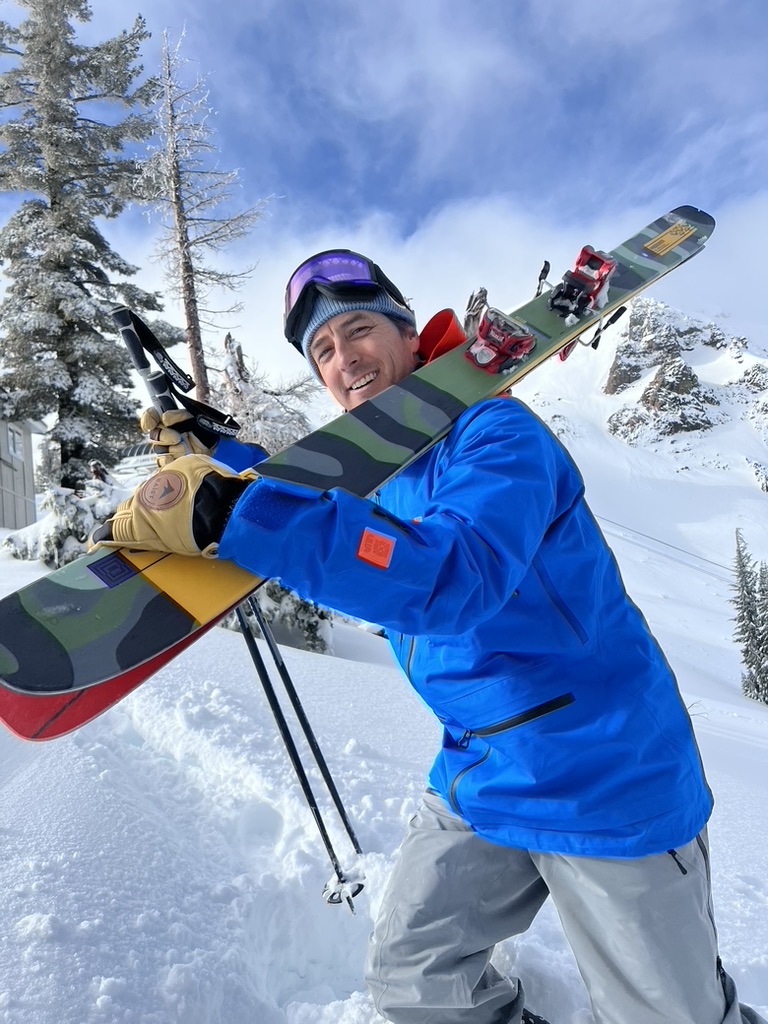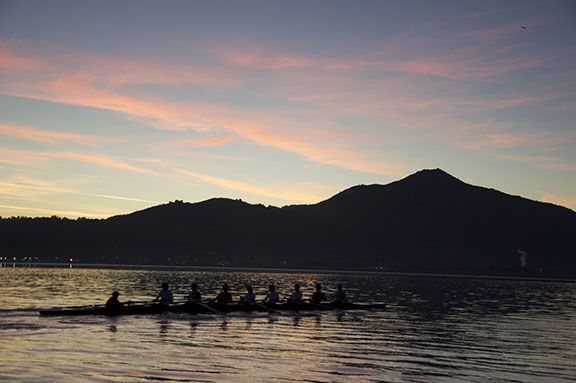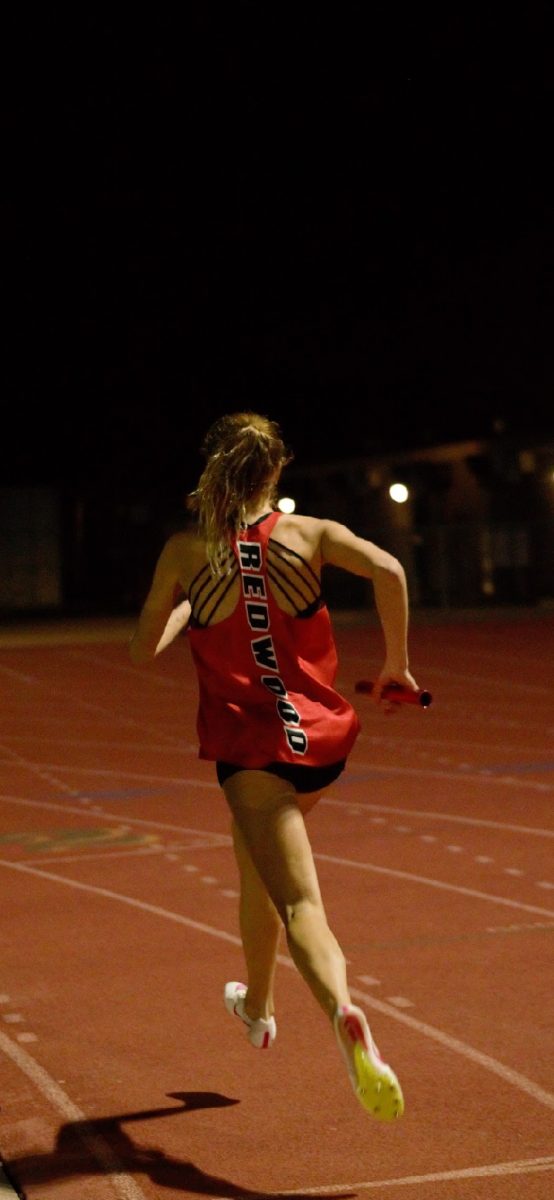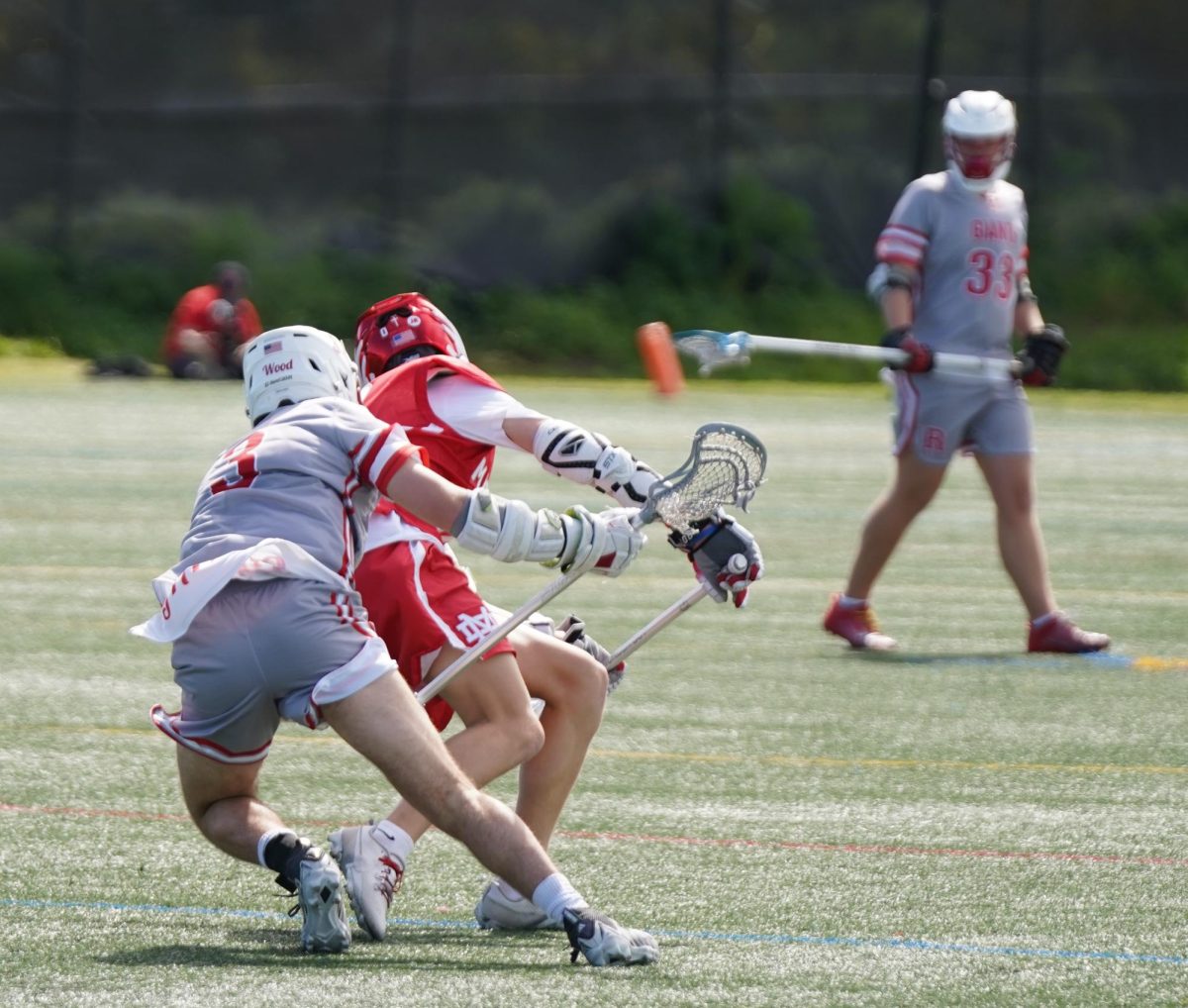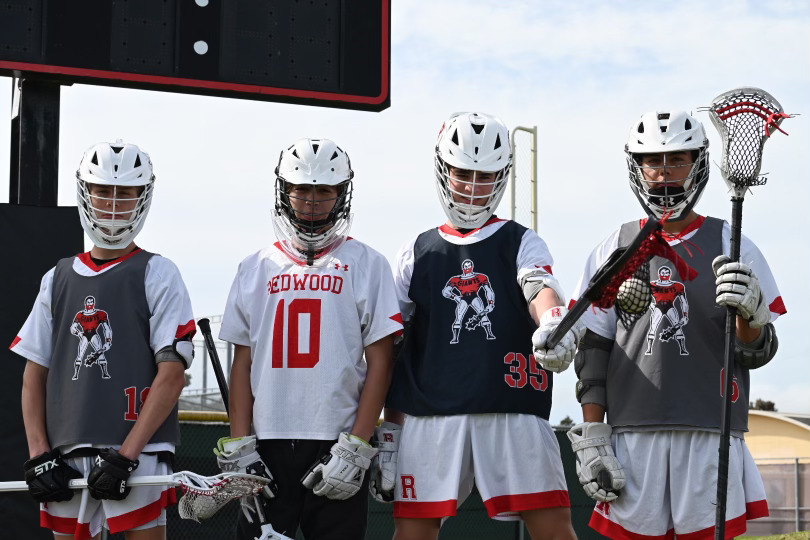This story is part of a two-piece special done on crew. Make sure to check out the other story, about junior Riley Overfield’s transition from coxswain to rower.
To an untrained observer, the hypnotic rhythm of eight rowers gliding back and forth, working carbon fiber oars through the water in perfect unison, may seem effortless, as if some unseen force is guiding the rowers smoothly between the catch and the finish.
But to rowers, it is clear that a wholly different force is responsible for everything from the tempo of their strokes to the motivation of the team: the coxswain.
“The coxswain is like the leader of the boat,” said junior Riley Overfield, a current rower and former coxswain for the Marin Rowing Association. “On races, it’s against the rules to have any type of communication with your coach on the water. You have to be prepared and organized so you know what’s going to happen when, and you need to know what’s going on.”
Senior Yodai Yasunaga, who rowed his freshman year with Marin Rowing but has since competed primarily as a coxswain, said that though coxswains may seem undervalued to those with little knowledge of the sport, they earn immense respect in the rowing world.
“A boat is not a boat without a coxswain,” Yasunaga said. “In many ways, coxswains can make or break a race. If you have a really really bad coxswain, it’s really hard to get in a practice because coxswains do have to communicate through all the drills and all the plans and steering.”
Coxswains are essentially coaches once the boats push away from the dock. On paper, coxswains are responsible for leading team workouts and race warm-ups, as well as managing the complicated steering system of the boat. But more importantly, coxswains manage strategy during a race and motivate and inspire their rowers to push harder, row faster, and propel the boat to victory.
To be a great coxswain, one must know the capabilities of his or her crew to not only execute a race plan, but to make on-the-fly decisions and adjustments in the heat of a race. No matter what happens, a coxswain must remain relaxed and mature, and refrain from becoming frantic and rash.
Overfield now understands both sides of the coxswain-rower relationship and the importance of respect between teammates.
“Anyone knows when you’re working out, all you want to do is stop. And the coxswain – who is not doing anything, who you’re having to carrying around – says ‘go harder’ or ‘this isn’t good enough’ or ‘we need to do this’ or ‘we need to go faster,’ when you’re like, ‘I can’t.’ Even the tiniest bit of disrespect – it’ll just blow apart,” Overfield said.
According to Overfield, the best coxswains exhibit intense dedication and competitiveness in order to garner the respect of the rowers – most of the time. As a coxswain, Overfield said there were definitely days where he felt hated by his rowers.
“When you’re giving all you can, and if it’s a bad day and you don’t know why it’s a bad day, and the coxswain is just dishing it out, you’re like, ‘What do you want me to do? You try it.’ That’s where that respect comes in,” Overfield said.
According to Yasunaga, competing as both a rower and a coxswain provides perspective that helps him in both roles.
“Most coxswains don’t ever row, so they don’t really know what it’s like to be a rower and be in the middle of a piece and almost die,” Yasunaga said. “It’s hard to get how much they’re suffering when you’re just coxswaining and just using your voice. So I think it gives good perspective of what they’re thinking about or how they’re feeling and use that as a way to better your coxswaining.”
According to Overfield, there must be a certain understanding between rowers and their coxswain.
“The rowers need to know you are fully involved so they know that this needs to happen so they do it,” Overfield said. “As a rower, I really understand now that when somebody says you have to do this, you have to assume that everyone else in the boat is going to do it, so therefore you have to do it as well. If you don’t do it, it’ll all just deteriorate.”
Overfield said that since his transition from coxswain to rower, numerous people have asked him how it feels “to be a real rower now.” Yet according to him, the lacwk of respect coxswains receive from outsiders can be attributed to their lack of knowledge of the sport, or familiarity with the flawed perception that all coxswains do is yell “row.”
“In general, people just don’t really know about rowing,” he said. “In the rowing community, or in the rowing world, or in Marin Rowing, I do get a lot of respect.”



